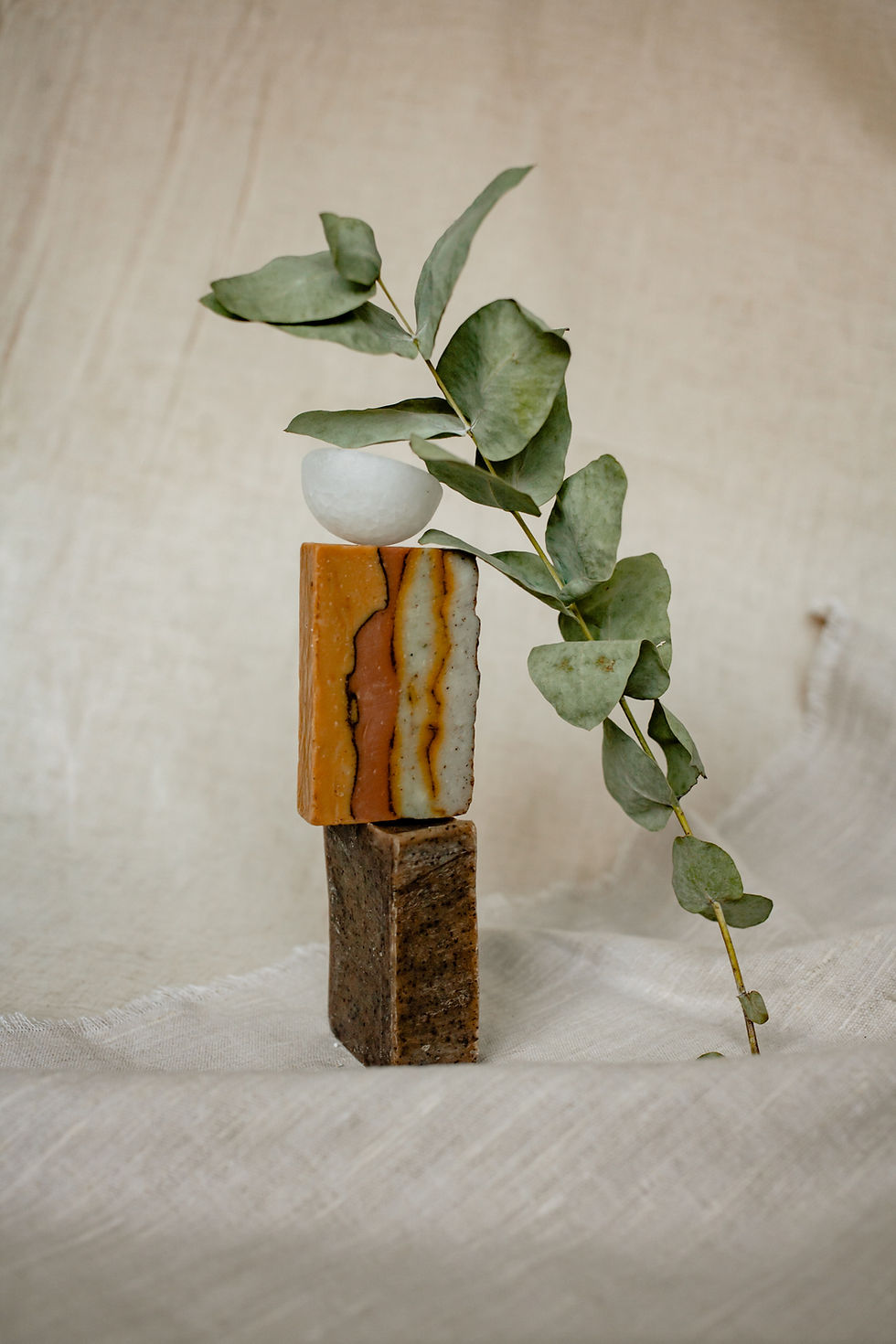How to Hand Make Your Own Soap?
- Dec 29, 2021
- 2 min read
Updated: Jan 8, 2022
Live Simply, Make Natural Things

Making soap at home is a valuable and enjoyable skill to acquire. Making soap is pleasant and not always as challenging as you may imagine, whether you want a natural alternative to store-bought soap or you're a talented person searching for a new creative endeavour.
It's safe, simple, and convenient to make soap with a base. To begin, go to a craft store or soap provider and purchase pre-made blocks of uncolored, unscented soap "base." You won't need to handle lye because the base has already gone through saponification. After that, the soap base is melted in the microwave or a double boiler. You can add fragrance, colour, and additions once the soap has completely melted. When the mixture has hardened, pour it into a mould, and the soap is ready to use. After purchasing a soap base, you'll need a few pieces of equipment to get started creating soap.
Microwave or double boiler
A heat-resistant bowl for the microwave
Measuring spoons and whisks
Fragrance, colour, or additives, as desired
A mould
Glycerin, either white or clear, is the most common soap basis. Try a base made with goat's milk, olive oil, or Shea butter for a more luxury soap. To make the soap base melt faster, chop it into bits. If you want to melt the chunks in the microwave, place the base in a microwave-safe dish and stir every 30 seconds until the chunks are liquid and smooth. Alternatively, melt in a double boiler over low heat, constantly stirring until the mixture is runny and soft. Allow the base to cool to 120 degrees Fahrenheit before adding your favourite colourants, scents, and additions. Finally, pour the mixture into the soap mould, wait a day for the soap to firm and dry, then take it from the mould and use it.
When making soap, there are a few things to keep in mind. Because the melted base is thin, additives may sink to the bottom if you don't wait until it cools before adding them. When employing additives, the soap cools and hardens rapidly, so you'll have to learn to pace it correctly. If you overheat the base, it will burn and get gloppy, making it difficult to put into a mould.
In soap, many plants tend to change colour. In soaps, certain additives work better than others. For optimal results, use sandalwood powder or dried calendula flower petals. Exfoliants, fruit seeds, and milk powders are among the other ingredients.






Comments